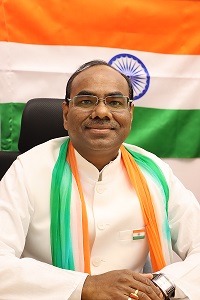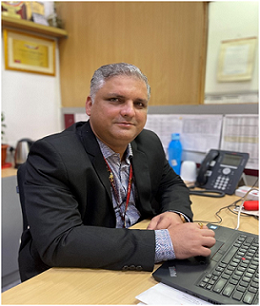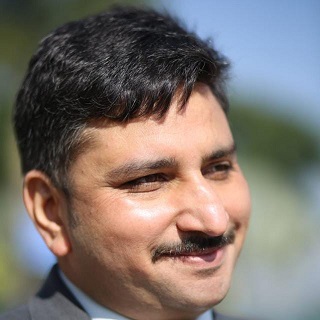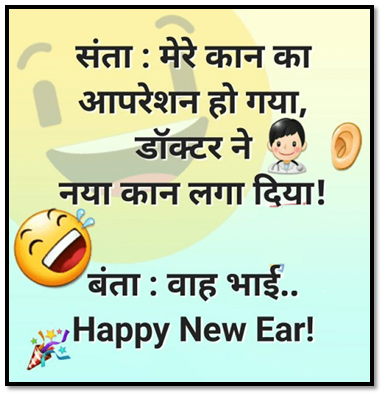



Dear Smiling Teammates,
I am sure each one of you is keeping yourself happier in 2023 as the New Year comes with a lot of hopes and excitement. The month of January was blessed as we celebrated the festivals of harvest in the form of Lohri, Makar Sankranti, Pongal, Uttarayan and Bihu, followed by National Girl Child Day and the Republic Day. Let us keep the celebrations on every occasion as we live in a culturally rich country.
We all get excited when we are appreciated by anyone. A person who is appreciated will always do more than what is expected! Appreciation is also a way to show our gratitude and always brings happiness in others life. In this February 2023 Edition of our magazine, we will talk about ‘Appreciation’ under ‘Nurture your talent’ series and will showcase why ‘Appreciation’ is important for us and our colleagues for career growth. I can only say, “You need to practice ‘Appreciation’ to believe in its magic”.
In this edition, we have come up with new videos in our section ‘Hot Shots’ which will surely make you smile. Keep Smiling ☺!
We all love to visit the beautiful hill stations in our country and to showcase the beauty of Dharamshala which is also the ‘home of his holiness’ Dalai Lama, under ‘My City My Place’ series. Let’s take a tour of this beautiful place in Himachal Pradesh.
It is overwhelming to see the growth in viewership of our Digital Magazine – SpicyReflection. We would like to thank you for your participation in SpicyReflection Quiz and also would like to congratulate Mr. Arshad Abdulmatin Sareshwala from the Ahmedabad team for winning the SpicyReflection Quiz (January 2023 Edition). Our best wishes to all the participants for our February 2023 Quiz.
‘Happiness is enjoying the little things in life’ and with our ‘Smile Campaign’ we have created moments of happiness within our team and with our customers. Let the happiness quotient keep moving up for all of our team members as well as for all of our customers. We need to continue our focus on service with Eye contact, Smile and Greetings at all the customer touch points. We congratulate each one of you for your immense contribution. Please keep it up!
We are sure you will enjoy this edition of SpicyReflection filled with knowledgeable and interesting facts. Please do share your feedback / ideas for the next edition. Also enjoy our fun filled social media page “SpicyReflection” on Instagram, Facebook and YouTube.
Keep Reading and Sharing!!
Jai Hind!
Your Captain
GP Gupta
Appreciation is one of the most important tool for encouraging and motivating people. It validates what people do and energizes them to do better. People who use this tool become much more acceptable as a leader. By the way, there is no cost for appreciating people.
Meaning of ‘Appreciation’
Appreciation is an act of admiration and validation of an event, a person, a behaviour or an object. It is an essential part of life that can have a significant impact on an individual's happiness and overall well-being. When we appreciate something or someone, we are acknowledging their efforts, value and importance. These positive emotions can contribute to a deep sense of happiness and fulfillment.
‘Appreciation’ can be expressed through words, actions, or gestures, such as thanking someone, complimenting their efforts or abilities, or showing them respect. It is an important aspect of life because it allows us to recognize and value the good things in our lives and the contributions of others. It strengthens relationships and increase happiness
‘Appreciation’ and Happiness
‘Appreciation’ and happiness are closely related. Feeling of ‘Appreciation’ will lead to increased happiness and being happy will lead to an increase in the ability to appreciate things. Both ‘Appreciation’ and ‘Happiness’ promote each other. By actively seeking out and expressing ‘Appreciation’, we can increase our own happiness and the happiness of those around us. When we feel appreciated, it can boost our self-esteem and make us feel more valued and worthy. This can lead to an increase in happiness and positive emotions.
On the other hand, being happy can also lead to an increase in the ability to appreciate things. When we are feeling positive and content, we are more likely to be open to and notice the good things in life. This can lead to a greater sense of ‘Appreciation’ for the people and things around us.
‘Appreciation’ Vs Gratitude
‘Appreciation’ and gratitude are closely related concepts, but there is a subtle difference between the two as both can be mutually inclusively as well as exclusively. The difference between the two is explained hereunder:-
| S.No. | Particular | Appreciation | Gratitude |
|---|---|---|---|
| 1 | Meaning | ‘Appreciation’ is an act of admiration and validation of an event, a person, a behavior or an object. | Gratitude is a deep feeling of gratefulness for someone or something which has been of a great help. |
| 2 | Single or multiple events or things | ‘Appreciation’ is generally related to a specific event or thing or behavior. | Gratitude is may be linked to a single or multiple events or things. |
| 3 | Short term or long term | ‘Appreciation’ is generally short term phenomenon. | Gratitude is generally long term phenomenon. |
| 4 | Beneficiary | ‘Appreciation’ may arise when beneficiary of a particular service or behavior may be a third party. | Gratitude arises only when beneficiary of a particular service or behavior is self or loved ones. |
| 5 | Mutual dependency | We may have sense of ‘Appreciation’ but no gratitude in case someone has done something for a third party in the best possible manner. | We may have sense of gratitude but with no ‘Appreciation’ in case someone has done something for us but may not be in the best possible manner. |
| 6 | Expression | ‘Appreciation’ is more expressed in verbal or written. | Gratitude is more expressed in behavior. |
Components of ‘Appreciation’
The main components of ‘Appreciation’ are as under:-
✈ Recognition
This involves noticing the worth or value of something or someone.
✈ Acknowledgement
This is the act of expressing recognition or appreciation for something or someone. It can involve thanking someone, complimenting their efforts or abilities, or showing them respect.
✈ Valuing
This involves placing importance on something or someone and recognizing their worth or value.
✈ Enjoyment
This is the act of taking pleasure in something or finding it enjoyable.
✈ Appreciative attitude
This is an overall perspective or mindset of ‘Appreciation’ and gratitude towards life and the people and things in it. It involves focusing on the positive aspects and expressing gratitude and appreciation for them.
✈ Admiration
Having a feeling of respect or reverence for something or someone.
✈ Awe
This is a feeling of wonder or amazement in response to something impressive or grand.
✈ Gratitude
This is a feeling of thankfulness and appreciation for something that has been received or given.
✈ Graciousness
This is the act of showing kindness, generosity and appreciation towards others.
Type of ‘Appreciation’
There are many different types of ‘Appreciation’, depending on what or who is being appreciated and how it is being expressed. Some common types of appreciation include.
✈ ‘Appreciation’ for behaviour
This is an act of recognizing someone’s good behaviour or services rendered and appreciating the same.
✈ ‘Appreciation’ for beauty
This is the act of finding beauty in things and expressing ‘Appreciation’ for it.
✈ ‘Appreciation’ for art
This is the act of finding value and enjoyment in art and expressing ‘Appreciation’ for it.
✈ ‘Appreciation’ for nature
This is the act of finding beauty and value in nature and expressing ‘Appreciation’ for it.
✈ ‘Appreciation’ for music
This is the act of finding value and enjoyment in music and expressing ‘Appreciation’ for it.
✈ ‘Appreciation’ for culture
This is the act of finding value and enjoyment in different cultures and expressing ‘Appreciation’ for them.
✈ ‘Appreciation’ for attitude
This is an act of recognizing someone’s positive attitude, perspective or mindset and appreciating the same.
Importance of ‘Appreciation’
Appreciation is an important aspect of human behaviour. This is of great importance in corporate life. Following points explain the importance of the ‘Appreciation’:-
1. ‘Appreciation’ validates someone’s product, service or behaviour
2. ‘Appreciation’ motivates and energizes people
3. ‘Appreciation’ encourages people to even do better
4. ‘Appreciation’ creates bonding and an environment of ‘Faith, Trust and Confidence’
5. ‘Appreciation’ promotes happiness
6. ‘Appreciation’ promotes positive and effective communication
7. ‘Appreciation’ nurtures job satisfaction
8. ‘Appreciation’ improves emotional wellbeing and overall satisfaction
Why we do not appreciate enough?
Despite of the fact that ‘Appreciation’ is free of cost and it carries so many advantages, still people do not practice it enough. Some of the impediments to ‘Appreciation’ are as under:-
✈ Self EGO and Arrogance
✈ Lack of awareness or thoughtfulness towards ‘Appreciation’
✈ Due to negative emotions such as resentment or anger
✈ Lack of understanding of the importance of ‘Appreciation’ in relationships
✈ Some people may be too busy or preoccupied with their own problems to take the time to appreciate others
✈ Not valuing ‘Appreciation’ as much as other forms of communication
✈ May have difficulty expressing their feelings
✈ Some people may not be aware of the impact of their own words and actions
How to Appreciate? Or Ways to Appreciate
There are many ways that people can show ‘Appreciation’ for someone or something. Some common signs of ‘Appreciation’ include:-
✈ Verbal ‘Appreciation’
A simple and effective way to show ‘Appreciation’ is to say "I appreciate it", “Deeply appreciated”, “Thank you, highly appreciate” or similar phrases can go a long way in expressing your ‘Appreciation’ for something someone has done for you or for something you appreciate about them.
✈ Giving a compliment
Complimenting someone on their work, appearance or other attributes is a great way to show ‘Appreciation’.
✈ Giving a gift
Giving a small token of appreciation, whether it's something small or something more substantial, can be a thoughtful way to show ‘Appreciation’.
✈ Offering help or support
Offering to help someone out with a task or offering emotional support can be a great way to show ‘Appreciation’.
✈ Giving praise
Publicly praising someone for their work or accomplishments can be a great way to show ‘Appreciation’ and motivate them to continue doing their best.
✈ Making an effort to spend time with someone
Taking the time to hang out with someone or make plans with them can show that you value their company and appreciate their presence in your life.
✈ Appreciating in writing
Writing a letter, sending a handwritten note, card, or email to express ‘Appreciation’ can be a thoughtful, meaningful and personal way to show you care.
✈ Doing something kind or act of service
Doing something kind or helpful for someone, such as doing some task for and on their behalf, can be a thoughtful way to show ‘Appreciation’.
✈ Body language
Nonverbal cues such as a smile, hug, or pat on the back can also be ways to show ‘Appreciation’.
✈ Public recognition
Recognizing someone's contributions or achievements publicly, such as through an award or public acknowledgement, can be a way to show ‘Appreciation’.
It is important to remember to be sincere and authentic when showing ‘Appreciation’. Think about what the person values and what would be meaningful to them and then take action based on that.
Before I end this article I would like to reiterate that ‘Appreciation’ is one of the most important aspect of human behaviour and there is no cost to this. Everyone must practice ‘Appreciation’ everywhere to the fullest whether at home or office. We must also ‘Appreciate’ our parents and other loved ones who are our real investors and support system.
“Appreciation can make a day, even change a life. Your willingness to put it all into words is all that is necessary.” – Margaret Cousins
"Feeling grateful or appreciative of someone or something in your life actually attracts more of the things that you appreciate and value into your life."
“You need to practice ‘Appreciation’ to believe in its power.”



Change
We are in an industry that is ever changing, evolving and innovating. Be it the science or the technology, the hardware we use or the way we communicate. One of life’s constants is change. Ready or not, it happens.
Some people thrive on change; others will do all they can to resist it. We like it best on our terms, but don’t always have that option. Sometimes all we can do is cope with it. When given the opportunity to exert our will in the matter, we’re wise to proceed with caution. Change for the sake of change is a risk – the grass on the other side isn’t always greener.
Change is not always a good thing. It may force us out of tired habits and impose better ones upon us, but it can also be stressful, costly and even destructive. What’s important about change is how we anticipate it and react to it. Change can teach us to adapt and help us develop resilience, but only if we understand our own capacity for growth and learning. When change makes us better, it’s because we have learned how to turn a challenging situation to our own advantage, not merely because change happens.
Change isn’t inherently good or bad. It’s something that is inevitable. Many people hate change, yet others look forward to it. Resistance to change is normal yet a very destructive thing. Change can be difficult to accept and adapt to, but it is important to remember that change is a natural part of life.
Change is good. It’s also often hard. This is the fastest-changing communications and technology landscape we’ve ever been in. Twenty years ago, you probably didn’t have an email address and Ten year ago there was no Facebook or social media. Progress is impossible without change. And those who cannot change their minds cannot change anything.
One of the most common forms of change is personal change. This can be a change in one's career, relationships, or personal goals. Personal change can be difficult, but it can also lead to personal growth and self-improvement. It can help individuals to discover new passions, gain new skills and reach new heights.
Change can also occur in organizations and communities. These changes can be in the form of new policies, procedures, or technologies. Organizational change can be difficult for employees, as it can disrupt established routines and require new skills and adaptability. However, it can also lead to improved efficiency, productivity and growth.
Change can also happen at a societal level. This can include changes in laws, customs, or attitudes. Societal change can be difficult and controversial, but it can also lead to progress and improvement.
In conclusion, change is a constant in life and it can be both exciting and challenging. It can bring new opportunities, progress and personal growth, but it can also cause discomfort and uncertainty. It is important to approach change with an open mind and to be flexible and adaptable. It is also important to strive for positive outcomes, both for ourselves and for society.
The only thing that never changes is change itself.
― D.B. Coulson
By Mr. Gavin Jeffries (Deputy General Manager – Ground Services)

As we move to study our fleet from Boeings to Q-400, we are proud to have introduced this beautiful aircraft to Indian skies.
The De Havilland Canada DHC-8, commonly known as the Dash 8, is a series of turboprop-powered regional airliner aircraft, introduced by De Havilland Canada (DHC) in 1984. DHC was later bought by Boeing in 1988, then by Bombardier in 1992; then by Longview Aviation Capital in 2019, reviving the De Havilland Canada brand. Powered by two Pratt & Whitney Canada PW100s engines, it was developed from the Dash 7 with improved cruise performance and lower operational costs, but without STOL (Short takeoff and landing) performance. Three sizes were offered: initially the 37–40 seat -100 until 2005 and the more powerful -200 from 1995, the stretched 50–56 seats -300 from 1989, both until 2009 and the 68–90 seats -400 from 1999, still in production. The Q-Series are post-1997 variants fitted with active noise control systems.
Let’s see manufacture of a Q-400 specially for SpiceJet
In the next editions we will start our journey to understand the principles related to flying of an aircraft………..
By: Pradyumna Sharma
Valentine Almeida–Being No.1
The title not only speaks about striving to be number one but also represents the number of my Jersey. In my school days my passion for Football was incremental and my love for the sport grew even more while I advanced into Higher education where I performed for Associations and clubs. I was the first to introduce this sport in our organization-SpiceJet - and currently at the age of 58 holding tournaments across different Airlines in Mumbai.
My amazing school Our Lady of Dolours High School Sonapur known for their achievements with Best athletes and coaches dedicated their time and encouragements which shaped me into a fine goal keeper. Whilst in Degree Rizvi college my team and I worked hard to reach the Semi-finals against Andrews college at Bombay university level in which we gave a tough competition. This gave me the experience and provided me with the opportunity to be selected in Bombay University clubs like Romania,Clarmerlities and Mumbai Muslims sports where I successfully won trophies and earned a name for the best Goalkeeper-‘The rock’. Well-known Schools in Bandra approached me to be a coach for little children that were eager to be trained for this sport but due to my work schedules I unfortunately could not pursue this opportunity.
Inter Airlines competitions like Indigo, GO First, Sri Lankan Airline,Qatar and MIAL (GVK) were organized by me and held in the year 2020 just before the Pandemic struck, despite being challenging the last tournament held on the turf (Six a Side) was a great success.
Last but not the least, I have been the Vice President of Bandra West Football Association for 18 years. Till date as we have successfully carried out tournaments for Bandra Super league, Division 1, Women and boys under 14 and under 10 held during the period of June till November.
I feel proud to share my passion and my journey with you all!!
Mr. Valentine Almeida (Duty Manager – BOM)







Dear all, today I would like to share my story with all of you as I joined SpiceJet family on 08th July 2010 and immediately my passion towards football was noticed by my seniors and has been very supportive. Few times I’ve played Tournament at Kolkata Parshi Club representing our Esteemed Company.
Few Memorable Moments:
Before I started to play this game, I was afraid of playing football as my father was also into this game and I have seen the level of injury that my father had during his one of the match.
With the time my weight increased up to 89Kgs at the age of 15years due to non-involvement in any outdoor games. My father asked me to join football club for my fitness purpose then I decided to join my school Football Team.
My first football coach Mr. Bishu Das former Center forward Player of East Bengal Club have worked very hard for 06 months on training me to get selected for East Zone Championship of CBSE Cluster II as a Goalkeeper from my School Football Team. It was my first ever big match to play on the East Zone against Jharkhand School Team 02 time champion and winning those champions by saving 03 goals was the proudest and a great moment also to realize playing football for my fitness, had already became my passion.
Later, I joined College Team and have played Inter-University Championship match where we were consecutive 03 time year 2005-2007 champions.
Last Sep 2022 IXB SpiceJet Team participated in Aviation Premier League against IXB Vistara and won the match by 04-02 goals, but unfortunately we were runner up in final against IXB Indigo Team with 01-0 goals but with runner up we were awarded with the most respectful team of the tournament.
Profession: - My father has always been my inspiration and he says if a person can peruse his passion as his carrier he is one of the luckiest people. I joined SpiceJet Ltd Kolkata on 8 Jul 2010 & now share my passion with other seniors in football too. Played Few Tournaments in Kolkata Parshi club representing SpiceJet.
Though I have worked with few company earlier but SpiceJet in the only one which I have started with passion and have sticked with the SpiceJet Family till Date.
This is the only company which I have stayed for a long period of time and working with SpiceJet given me a positive energy and I am proud to stay that I work with SpiceJet ltd. Its just not a company it’s a family where we get guidance for both our professional and personal life.
Now a day there is huge respect for me in the field of passion in the world of football because of SpiceJet. SpiceJet given me the opportunity to maintain both passion and profession together, as I grow with SpiceJet family I can see my longevity with SpiceJet and would like to give special thanks to my seniors who supported me and taught me a lot and as a result I am still with this awesome family and wish to be there for a long time.
Thanking to all My Seniors & Mentors for their support who rectified & guided me for what I am today.
By: Sourav Routh (Security In-Charge- Bagdogra)




Dharmshala
Introduction
Dharamshala is the winter capital of Himachal Pradesh is surrounded by dense coniferous forest consisting mainly of stately Deodar cedar trees in the lap of majestic Dhauladhar ranges. The city has been selected as one of a hundred in India to be developed as a smart city under Indian Prime Minister Mr. Narendra Modi's flagship "Smart Cities Mission".On 19 January 2017, the Chief Minister of Himachal Pradesh, Mr. Virbhadra Singh, declared Dharamshala as the second capital of Himachal Pradesh, making it the third national administrative division of India to have two capitals after the state of Maharashtra and the union territory of Jammu and Kashmir.
The suburbs include McLeod Ganj, lying in the upper reaches, is known worldwide for being the home of the His Holiness Dalai Lama, Bhagsunag, Dharamkot, Naddi, Forsyth Ganj, Kotwali Bazar (the main market), Kaccheri Adda (government offices such as the court, police, post, etc.), Dari, Ramnagar, Sidhpur and Sidhbari (where the most housing is based).


History
Before the British Raj, Dharamshala and its surrounding area was under the Sikh Empire of Lahore. Under the British Raj, the regions were part of undivided province of Punjab and was ruled by the governors of Punjab from Lahore. The Katoch dynasty that earlier ruled this region had been reduced to status of jagirdars (of Kangra-Lambagraon) under the Treaty of Jawalamukhi, signed in 1810 between Sansar Chand Katoch and Maharaja Ranjit Singh of the Sikh Empire. The indigenous people of the Dharamshala area (and the surrounding region) are the Gaddis (Tribals of Dharamshala) predominantly Hindu group who traditionally lived a nomadic or semi-nomadic lifestyle. Due to the lack of permanent settlements in the area, some Gaddis lost their seasonal pastures and farmland when the British and the Gurkhas arrived to settle. In 1848, the area now known as Dharamshala was annexed by the British. In 1860, the 66th Gurkha Light Infantry was moved from Kangra, Himachal Pradesh to Dharamshala. Dharamshala became a popular hill station for the British working in or near Delhi, However they moved Shimla after an earthquake caused a lot of disaster in 1905.
The Tibetan settlement of Dharamshala began in 1959, when the Dalai Lama had to flee Tibet and Mr. Jawaharlal Nehru, the then Prime Minister of India allowed him and his followers to settle in McLeod Ganj. There they established the "government-in-exile" in 1960 and the Namgyal Monastery. Dharamshala had been connected with Hinduism and Buddhism for a long time, many monasteries having been established there in the past, by Tibetan immigrants in the 19th century.
Culture
Dharamshala is a culturally rich city with pahadi and gaddi culture. All major festivals of India are celebrated here However Himachal Pradesh being called “Shiv Bhoomi” Mahashivratri, Dussehra and Deepawali are celebrate on large scale. Shiv Nuala is also very important function in Gaddi Culture where lord Shiva worshippers take the whole night in the form of religious songs and dance.


Connectivity
• Road
Buses of all classes (deluxe, air-conditioned and regular) connect from city to other major states such as Chandigarh, Delhi and Shimla through NH 154 and NH 503.
• Air
Dharamshala town is reached by Gaggal Airport about 12 km from the town's south and about 10 km north from Kangra town.

• Rail
Pathankot, some 90 km away, is the nearest broad gauge railway head. The Kangra Valley Railway, a narrow gauge railway line connecting Pathankot to Jogindernagar, can also be used to reach the town via rail. This line is well-known for picturesque views of the Kangra valley from it. The nearest station to Dharamshala on this line is Chamunda Marg, located about 22 km southeast.
Food
While the hills and abundant spiritual centres in Dharamshala are attractive enough to beckon visitors, the food plays a major part in making ones stay better and more wholesome. The famous food of Dharamshala are ‘Tudkiya Bhaat’ (traditonal fried rice),Madra, Kangri dhaam (famous feast of Dharamshala, used in marriages and major functions), are traditional Himachali dishes. Tibetian delicacies such as Thupka, Shapta, Momos, Thenthuk will bring out the foodie inside you.


Places to Visit (Distance from airport)
✈ Dharamshala cricket stadium (11.7Km)
✈ Mcleod Ganj (18 Km)
✈ Bhagsunath Temple along with Bhagsu Waterfall (18.7km)
✈ Dal Lake at Naddi (18.6 km)
✈ Kangra valley (07 km)
✈ Dharamkot (19Km)
✈ Ropeway (13.8km)
✈ Dalai Lama Temple Complex (17.7km)
✈ Gyuto Monastery (25.6 Km)
✈ Tea Gardens of Dharamshala (10 Km) and Palampur (37.9 Km)
✈ Shobha Singh Art Gallery at Palampur (45.8 km)
✈ Sunset from Naddi and Bhangotu village (15 Km)
Religious Places to Visit:
• Chaar Dhaam Temples




• Chamunda Devi
• Brajeshwri Mata
• Jwalaji Mandir
• Chintpurni Mata
Other important religious places are Indrunag Temple, Aghanjar Mahadev at Khaniyara, Bagulamukhi Mata at Bankhandi and Kunal Pathri Mata.

What is there to do in Dharamshala?
1 Paragliding in Bir Billing and Indrunag
2 Camping
3 Trekking
4 Rock Climbing
5 Cycling

Trekking In Dharamshala
Dharamshala is a starting point to a number of trekking trails that especially includes lead trekkers across Dhauladhar into the upper Ravi Valley and Chamba district. En route, trekkers cross through forests of deodar, pine, oak and rhododendron and pass streams and rivers and wind along vertiginous cliff tracks and the occasional lake waterfall and glacier.
A two kilometre amble takes one to Bhagsu and then a further three kilometre walk will lead the trekkers to Dharamkot. If one wishes to go on a longer walk then he/she can trek eight kilometres to Triund. The snow line of Ilaqa Got is just a five kilometre walk.
Other trekking trails that lead trekkers to Chamba from Dharamshala are:
• Total Pass (4575m) which begins from Tang Narwana (1150m) that is nearly 10 km from Dharamshala
• Across Bhimghasutri Pass (4580m) via near-vertical rocky ascents, steep cliffs and dangerous gorges. This is a highly difficult level trek and takes around six days to complete.
• Dharamshala—Bleni Pass (3710m) – Dunali. Compared to other trekking trails, this one is much easier and takes around four or five-days to complete. The trek leads through alpine pastures, woods and streams, before ending at Dunali, on the Chamba road.
• Dharamshala is an ideal destination for rock climbing enthusiasts. One can go rock climbing over the ridges of the Dhauladhar range.
• Kareri Lake (near Kareri village) is also a famous trekking destination for travellers.
• Triund-Thatri-Trek a circular trek for two nights and three days around Dharamshala. The first day involves walking up to Triund and staying for a night and the second day walk to a village called Thatri and stay overnight at Camp Himalayan Nest. The third day after walking for couple of hours, walkers reach to broadhead near Dharamshala.


Dharamshala International Film Festival
DIFF was established in 2012, usually happens in month on November. It is presented by White Crane Arts & Media trust, established by filmmakers Ritu Sarin and Tenzing Sonam to promote contemporary art, cinema and independent media practices in the Himalayan region
Best Time to Visit Dharamshala
There is no particular time to visit Dharamshala as every season has its own beauty here. Summers are pleasant with cool breeze flowing with scent of forest trees all over the place. In Monsoon, you can enjoy sitting in the cafes having your favourite beverages, when the rain drops falling from the sky, clouds are moving around the valley and mountains, will leave you awestruck. Also small-small waterfall flowing from the mountains will make you feel mesmerized. In Winters, you can enjoy the phenomenal view of mighty Dhauladhars and lower peaks loaded with snow.
Final Words
Dharamshala in past few years has become very popular in India as it offers you the best of both worlds. At one point you will find yourself surrounded with lots of social Cafes and markets however at the other point you can go in complete isolation where you can meditate and bring out your spiritual side. Many people from India come to Dharamshala after work-from-home culture evolves in many corporate sectors. Lots of Co-living and Co- working spaces have been opened in past few years. People also love to spend their after retirement life here in lap of serenity and nature.
So when are you coming here to experience the magic?
Because mountains are calling…………
With warm regards,
By: Team Dharamshala

I love my job because everyone shares the same vision and is dedicated to the mission. This truly creates a family environment where everybody is there for each other. In my job people care about me as a person and about my professional growth. There is a genuine spirit of cooperation and shared goals all revolving around helping the customer. My boss listens to my ideas and the whole team works together to make them happen. We all support each other and work together to offer creative feedback and then make our ideas a reality.
I have a great degree of control and freedom within my job. I work full-time on a flexible schedule, both in and out-of-office and my boss trusts me to produce high-quality work and results. I work hard to maintain that level of trust, which keeps me engaged and excited but at the same time, I love that my job enables me to love and enjoy my other passions in life. Working in the aviation industry can give me an opportunity to interact with people from different countries, build strong global connections and experience new cultures. An airport is a fast-paced working environment.
Departure and arrival schedules mean that there is a constant flux of people traveling through an airport at all times of the day and night. Whether you work in a customer facing role or behind the scenes in a more technical role, all airport workers must work together to ensure that the airport continues to function efficiently.

On itself with a quilt of dark cloud 🌨️
Roaring hard and cheering very loud 📢
Child saying Tata bye bye from the ground
New thinking always say- let's give a try
It's our SpiceJet aircraft that rules the sky !!!
SpiceJet- Full of Spices and serving meal hot 🔥
Many varieties we've when you're flying onboard
Occupants mostly choose SpiceJet when they fly
It's our SpiceJet buddy- we rule the Sky!!!
We, the Ground Warriors workhard for your safety
#Red#Hot #Spicy. The team filled with Joy and are crafty
Our team does every possible effort and never feel shy
We always pray SpiceJet roars high in the Sky
We are SpiceJetters - who shines in the Sky

We think happiness comes from money, power, or other external things. But happiness doesn’t come from those things; it comes from within you. Happiness is a feeling of joy and contentment. It makes you feel good about yourself and your life. The world is full of sadness and pain. There are many reasons for this, but the most common one is that people don’t know how to be happy. Happiness can be found in many different ways, but it usually comes from loving yourself or loving someone else. When I was younger I used to think that.
Smiling is one of the most basic human emotions. Smiling has been shown to have a variety of health benefits, such as lowering stress levels and improving mood. Smiling can also be contagious, which means that if you smile at someone else they are more likely to smile back. Smiling has been shown to increase the release of endorphins in the brain which can improve your mood and reduce stress levels. Smile and Stay Happy!!

I was thinking of Freedom and thought of executing my thoughts towards the free mind state. Here I am not thinking about the rules of customs which are governed by people. I am thinking of emotional freedom: A conscious state of mind and eventually towards action. When the complete space of your mind is filled with smooth control on your thoughts and towards action when you fill within yourself with happiness and pour that happiness outward is a Freedom when our mind is Mature.
When our emotions are filled with pleasure the enjoyment of freedom is at its highest level and when we are happy we try to complete outside tasks in every possible way with ease, so it is very important to take care of our emotional freedom and it is completely our ownership.
The Freedom I am saying is about not only to be experienced by me, but also by others too and how is that even possible? It can be through bringing in acceptance of me, the other person and the circumstances in short, everything. Most of time, freedom is misunderstood for saying it “Seedhi baat”. However, this includes harshness over and the other and may lead to differences. My Freedom says, I said it freely and you are completely free to say whatever you want to say- Freedom experienced by both, mutually, giving clarity and space...freedom to be.
Let's retain that right to feel free and experience freedom by ourselves.

























































































































































































. Arshad Abdulmatin Sareshwala (Security Officer – AMD)
Team – Belagavi
Ms. Sai Raghavi (PNY)


